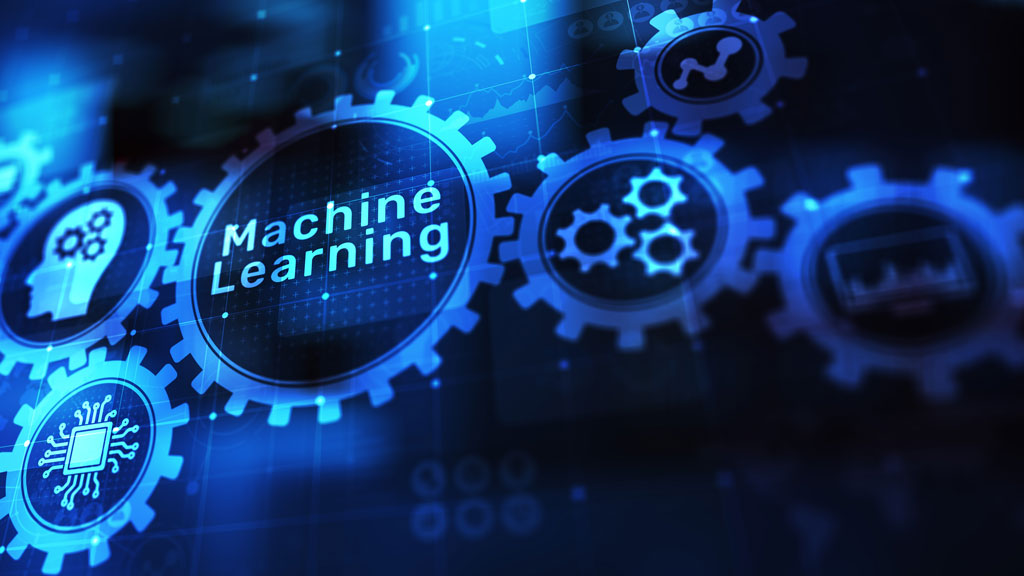Revolutionizing Industrial Automation: How Xentara Elevates Machine Learning to the Edge
Xentara is an advanced industrial edge control platform that provides real-time machine learning (ML) capabilities directly into manufacturing environments, addressing the limits of cloud-based ML solutions such as latency, bandwidth, integration complexity, and security issues. It processes high-frequency sensor data locally, allowing for extremely quick feedback and control, which is critical for tasks such as dynamic machine tuning, predictive maintenance, and real-time quality inspection. Unlike cloud models, Xentara supports a diverse set of industrial protocols and uses GPU and CPU acceleration to perform ML inferences in milliseconds. Its architecture enables deterministic behaviour using PREEMPT_RT Linux, and it deploys ML models using ONNX. Applications include real-time vision AI for defect identification, anomaly detection using models such as autoencoders and LSTMs, and adaptive predictive maintenance systems. With built-in security, smooth integration, and plans for future expansions like as causal ML and language-based interfaces, Xentara offers itself as a future-ready platform that transforms industrial automation via embedded intelligence at the edge.

Introduction
Manufacturing and industrial sectors are pushed by the demand for smart, adaptive, and efficient processes in the age of Industry 4.0. Central to this change is Machine Learning (ML), a technique enabling machines to learn from data, forecast results, and dynamically change operations without manual reprogramming. Including ML into industrial settings, therefore, presents a unique combination of difficulties: ultra-low latency needs, high-frequency data streams, system heterogeneity, and rigorous security requirements.
Although cloud-based ML systems like as AWS or Azure provide scalable options, they are usually inappropriate for these particular industrial limitations. Their reliance on constant data transmission, processing lag, and bandwidth overhead limits their practical use in real-time production settings.
Xentara, an advanced edge control platform, overcomes these constraints by bringing ML processing right to the production floor. It effortlessly connects with industrial hardware, locally processes large volumes of sensor data, and allows real-time, secure, and deterministic decision-making—all while closing the gap between traditional OT systems and modern AI technologies.
Industrial ML: Challenges of Cloud-Centric Models
Using ML in businesses is significantly more difficult than in traditional IT settings. Often collected at very high rates, industrial devices produce vast amounts of sensor data. For example, in a standard vibration analysis application—such as tracking the cutting blades in a production line—sensors might have to collect data at 40kHz or higher. This produces data streams surpassing 100 kilobytes per second per sensor, or gigabytes of data in a matter of hours.
Such data is difficult for cloud-based solutions to manage effectively. Transferring raw high-frequency data to cloud servers is not only cost-prohibitive because of bandwidth and storage fees but also causes unacceptable processing and response time delays. Processes requiring microsecond-level changes, such as avoiding tool wear, real-time temperature changes, or fine-tuning robotic operations on an assembly line, make this especially concerning.
Moreover, industrial plants depend on a varied ecology of protocols including Modbus, OPC-UA, MQTT, and proprietary legacy systems. Usually, cloud ML systems need sophisticated middleware to interact with these protocols, hence complicating integration and affecting dependability. At last, there are always security concerns: sending sensitive production data via the internet puts manufacturers at risk of possible violations of industry standards, breaches, and industrial espionage.
Xentara’s Edge ML Architecture: Bringing Intelligence to the Source
Xentara overcomes these difficulties by using a Edge-first ML approach. Rather than transferring raw data to faraway cloud servers, Xentara runs the ML models directly at the data source—on-premise, close to the machine controls, sensors, and actuators.
Xentara's architecture is centred on its real-time deterministic processing engine, industrial environment optimised. It guarantees consistent, low-latency execution cycles using PREEMPT_RT Linux kernels. Tasks needing quick feedback—such as dynamic machine control loops or safety-critical systems—are especially important in this regard.
GPU and Processing Requirements
Xentara's ML runtime runs on both CPU and GPU acceleration. Multi-core CPU optimization—usually running on x86 or ARM architectures—is enough for standard ML inference jobs. For more computationally demanding models, such convolutional neural networks (CNNs) used in vision systems or high-dimensional time-series analysis, GPU acceleration greatly improves throughput, but.
Xentara runs effectively on popular NVIDIA GPUs (e.g., Jetson series for embedded systems or RTX series for edge servers), combining with ONNX Runtime to run models. Depending on the particular ML task and data size:
- On CPUs with little latency (latencies <10 ms), lightweight classification models—decision trees, tiny neural nets—can run.
- Gpus help vision-based systems handling real-time video streams—for example, quality inspection at 60 FPS—to achieve inference times under 20 ms per frame.
- Real-time prediction without compromising data accuracy is possible by parallelising high-frequency sensor analysis—for example, 40kHz vibration data—across cores or GPUs.
How Xentara Handles Real-Time Feedback and Back Channeling
Cloud ML solutions' main drawbacks are their inability to offer real-time feedback (back channelling) to industrial devices. Sending data to the cloud, running inference, and sending control commands back to the factory creates unpredictable delays and even data losses caused by network problems.
Xentara basically redefines this approach. Xentara guarantees the back channeling—adjustments or control actions based on ML predictions—is implemented promptly, without depending on external connectivity by encapsulating the whole ML control loop locally.Xentara guarantees the back channeling—adjustments or control actions based on ML predictions—is performed immediately by embedding the whole ML control loop locally, therefore bypassing dependence on outside connectivity.
Here’s how it works:
- Sensor Data Acquisition: Xentara interfaces directly with field sensors (vibration, temperature, cameras, etc.) over industrial protocols.
- Real-Time ML Inference: Sensor signals are processed locally. Pre-trained ML models—optimized and converted to ONNX format—analyze the data in milliseconds or microseconds.
- Immediate Control Feedback: The inference results are transmitted directly to local controllers (PLCs, SCADA systems, robotic controllers) via native protocol support (OPC-UA, Modbus TCP, etc.). This eliminates the round-trip delay inherent in cloud-based systems.
- Dynamic Parameter Adjustment: Based on the ML output, Xentara modifies machine parameters such as cutting speed, temperature, or operational cycles on-the-fly, ensuring optimal performance and preventing downtime or defects.
This closed-loop, edge-executed back channeling mechanism is crucial in maintaining deterministic behavior in production environments where even milliseconds can mean the difference between optimal production and costly errors.
Practical Applications: Vision AI, Predictive Maintenance & Anomaly Detection
Vision AI Quality Control
Quality control is essential in high-speed industrial settings. Production lines can sometimes produce hundreds of units per minute, which calls for quick fault identification to save expensive waste and guarantee product consistency. Traditionally, cameras take pictures which are sent to cloud systems as AWS or Azure for problem categorisation. But, when real-time corrective action is required, this method creates natural latency—seconds-long delays—which are intolerable.
The whole visual processing pipeline is localised with Xentara Edge ML. Often getting inference times < 20 milliseconds per frame, trained Convolutional Neural Networks (CNNs) run directly on embedded hardware with GPU acceleration (e.g., NVIDIA Jetson), examining picture streams in real-time. Actuator signals are instantly activated to remove faulty items without affecting line flow as soon as a problem is found.
Xentara's dynamic adaptation distinguishes it. Operators can give comments, mark newly discovered problem kinds, and adjust models without stopping production. The system improves its accuracy over time by learning from new patterns and preserving rigorous production speed criteria.
Predictive Maintenance & Anomaly Detection
Industrial machines like motors, pumps, gearboxes, or cutting tools naturally degrade over time. Traditional maintenance strategies typically rely on fixed schedules—either too conservative (leading to unnecessary downtime) or too lax (risking unexpected failures).
Xentara eliminates this inefficiency through real-time Predictive Maintenance, powered by high-frequency data processing at the edge. The platform connects directly to vibration sensors, temperature probes, or current monitors, sampling signals at rates as high as 40kHz. Instead of transmitting raw data to the cloud, it leverages locally deployed ML models—including anomaly detection algorithms—to monitor machine behavior continuously.
How Anomaly Detection Works in Xentara:
Xentara employs a combination of unsupervised and semi-supervised anomaly detection techniques, such as:
- Autoencoders: The system learns the "normal" behavior profile of machinery. When live sensor data deviates beyond an acceptable threshold from the expected pattern, Xentara flags it as anomalous.
- One-Class SVMs (Support Vector Machines): Particularly useful when there are limited failure examples available, these models focus on defining the boundary of normal operation.
- Time-Series Forecasting Models (e.g., LSTM networks): For processes exhibiting temporal dependencies, Xentara predicts the expected sequence behavior, detecting anomalies when actual signals fall outside forecast confidence intervals.
Upon identifying an anomaly, Xentara's back channeling mechanism ensures immediate notification and action. Maintenance schedules can be dynamically adjusted, machine parameters fine-tuned, or the equipment safely shut down to prevent catastrophic failure—all without relying on cloud connectivity
Combined Impact
Together, Vision AI Quality Control, Predictive Maintenance, and Anomaly Detection form a closed-loop, intelligent system that ensures:
- Zero-defect manufacturing
- Optimized machine uptime
- Reduced maintenance costs
- Enhanced operational safety
Integration Simplicity and Security Assurance
Xentara's strength is not just in its real-time capabilities but also in its smooth integration with current industrial systems. It inherently supports several communication protocols, therefore eliminating the need for expensive retrofitting. While current equipment interfaces through OPC-UA or MQTT, older PLC systems can connect easily using Modbus RTU/TCP. Xentara connects several systems to provide unified control without compromising current processes.
Security gets topmost attention. Xentara enforces strong TLS/SSL encryption on all interfaces and keeps data on-premises to reduce outside exposure. Centralised security modules control user access, authentication, and regulatory framework compliance, thereby guaranteeing industry relevance in sensitive data management.
Looking Ahead: Future-Ready Edge Intelligence
Xentara's path is centred on pushing the frontiers of industrial intelligence ever more. Research on Causal Machine Learning will enable the system to find underlying causal connections—improving accuracy and removing false positives—not merely to forecast failures or flaws.
Xentara is also looking at integration with Large Language Models (LLMs) to provide natural language communication between operators and machines. Imagine a situation in which an operator might just enquire, "Why did the production line slow down today?" and Xentara's LLM interface would offer data-backed recommendations and context-aware justifications.
Conclusion
Xentara is not merely a machine learning platform—it is a comprehensive industrial edge control system designed to seamlessly integrate real-time data processing, control logic, and advanced ML capabilities into one cohesive architecture.
Rather than treating ML as an isolated service, Xentara embeds intelligence directly into the control loop, ensuring deterministic, secure, and adaptive system behavior. It eliminates the latency, security risks, and integration complexity associated with cloud-based ML solutions, making it uniquely suited for the demanding, high-speed environments of modern manufacturing.
Xentara not only uses machine learning but also redefines the whole edge automation concept—delivering intelligence exactly where it's needed, without compromise—thereby changing the future of manufacturing.
Share this article
If you found this article helpful, please share it with your friends!

